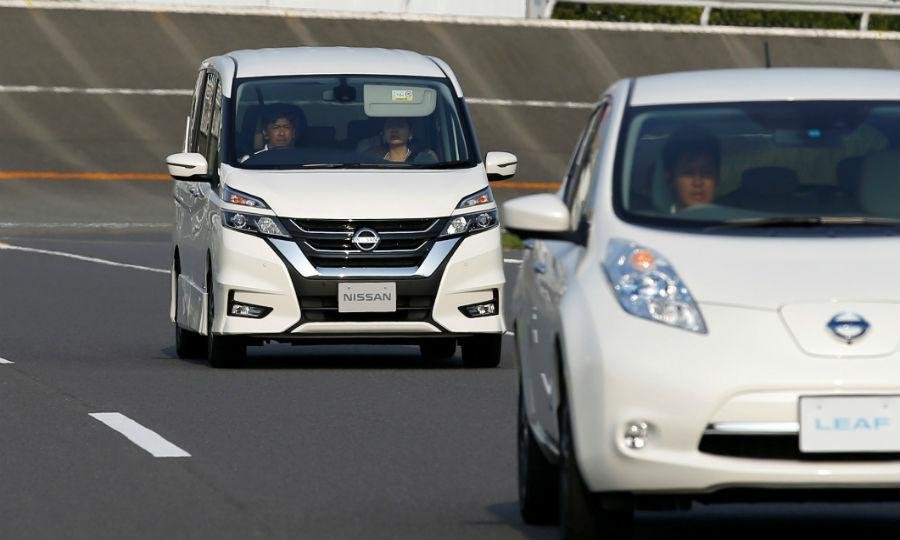Nissan debuts ProPILOT auto drive system but warns on safety

The automaker cautioned that automakers must warn about proper usage after the recent fatal crash of a self-driving Tesla.
Nissan’s new technology, dubbed ProPILOT, will be deployed first in a redesigned Serena family van scheduled to go on sale in Japan in late August, the company said today in a statement. ProPILOT will be offered in the Qashqai crossover in Europe next year. Vehicles in the U.S. and China will get the technology later. Nissan didn’t give a timeline for those introductions.
ProPILOT enables single-lane semiautonomous driving in highway conditions. It follows the car ahead, tracks lane markers and judges curves, executives say.
The technology keeps a safe distance from the preceding vehicle by modulating speed and can apply brakes to bring the car to a complete stop when necessary. It also self-steers the car to keep the vehicle centered in the lane and traveling smoothly around curves.
While the system allows drivers to take their hands off the wheel, it doesn’t tolerate doing so. A torque sensor on the steering column senses whether a hand is at helm. If not, a warning light comes on. If the driver still doesn’t take hold, a warning beeper starts to chime. If there is no grip for several seconds, the self-driving function disengages.
Nissan executives stressed that automakers must take the initiative in warning drivers about the limitations of self-driving technology and in reminding drivers that they are the final line of defense against crashes. The safety of autonomously driving systems has come under heightened scrutiny following a deadly May crash of a Tesla Model S in the United States.
That car was operating in autopilot mode, but Tesla has said crash data suggested the driver’s hands were not on the wheel at the time of the accident. It raised some questions about whether drivers were lulled into a false sense of security by the technology.
“We need to send out much stronger warnings as our technology becomes more advance,” Executive Vice President Hideyuki Sakamoto said at a news conference at Nissan’s global headquarters here. “Improving safety and functionality have to come as a set.”
Three-stage ramp up
ProPILOT is the first step of a three-stage ramp up to urban autonomous driving in 2020. Becoming a leader in self-driving cars, as well as electric vehicles, is a key pillar of CEO Carlos Ghosn’s strategy to rebrand the company as a technological innovator.
The autonomous driving technology aims to dent the 93 percent of all traffic accidents that Nissan says are caused by human error. The goal is a car that senses dangerous scenarios and avoids them before drivers are even aware of the looming perils.
“That is the kind of technology we are trying to develop,” Sakamoto said.
The Japanese automaker plans to build upon ProPILOT with a more advanced system due around 2018 that will allow automated driving across multiple lanes.
The rollout will culminate in a sophisticated autonomous system that will allow “intersection autonomy” by around 2020. That function will allow cars to navigate city intersections and urban traffic without driver intervention, Nissan promises.
